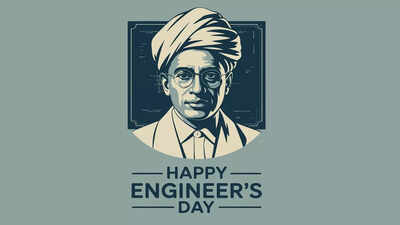ARTICLE AD BOX

engineers day 2025 sir visvesvaraya
Every year, on 15 September, India pauses to celebrate Engineer’s Day—a tribute not just to the might of machines or the marvel of bridges and dams, but to the spirit that dreams them into being.
The date marks the birth anniversary of Sir Mokshagundam Visvesvaraya (1861–1962), one of the most brilliant engineers the country has ever produced. Known simply as Sir MV, he rose from a humble village school in Muddenahalli to become the Dewan of Mysore, the builder of modern India’s early infrastructure, and a recipient of the Bharat Ratna. On this Engineer’s Day, as we celebrate bridges, machines, and blueprints, we also remember the schoolboy from Muddenahalli who dared to ask not just how, but why.
Muddenahalli beginnings: the making of Sir M Visvesvaraya
Muddenahalli, a tiny village in what is today Karnataka, was both cradle and crucible for young Mokshagundam. The world he was born into was modest: small home, simpler means, but a household where learning mattered. His father, Mokshagundam Srinivasa Shastrya, was a Sanskrit scholar, imbued in him a love for knowledge. After his father’s death, the path ahead looked steep. The loss meant more than grief—it meant financial strain, early responsibility, and a young Mokshagundam who could ill afford to forsake schooling.
He made the long walk to nearby Chikkaballapur every single day, boots dusty, in monsoons or sun. He carried his books close, sometimes reading by a flickering lamp late into night, when the rest of the village slept. To pay small school fees, he tutored younger children; to buy his notebooks, he saved every anna he could. This resilience carried him to Central College, Bangalore, where he completed a Bachelor of Arts (BA) in 1881.What’s striking isn’t glamour—it’s persistence. The young boy did not yet know the blueprint he would draw for India; but he was sketching the outlines in these childhood habits.
A dream called engineering
The BA degree was just the prologue. Fired by the idea of solving real-world problems, he travelled to Pune and earned a Licentiate in Civil Engineering (LCE) from the College of Engineering, Pune (COEP)—ranking first in his class. This was a time when engineering was still viewed as a colonial government service, not a calling.
Visvesvaraya, however, saw it as nation-building in disguise. He once noted that an engineer’s duty was “to think a hundred years ahead,” and he began doing just that.
Building the new India
His first posting took him to the Public Works Department of the Bombay Presidency, where he worked on water supply systems in towns like Nasik, Khandesh, and Pune. Soon, he was designing automatic floodgates, an invention later patented and installed at the Khadakwasla Dam.
He built waterworks at Sukkur (in present-day Pakistan) and devised a drainage system for Aden (now in Yemen).But it was his work in Mysore State that earned him national fame. As Chief Engineer, he led the construction of the Krishnaraja Sagara Dam (KRS), which turned barren Mandya into fertile farmland. When he became Dewan of Mysore (1912–1918), he transformed the state into a model of modernity—founding the Mysore Soap Factory, Bhadravati Iron and Steel Works, State Bank of Mysore, and the University Visvesvaraya College of Engineering (UVCE) in Bangalore.
He also prepared the blueprint for Hyderabad’s flood protection system after devastating floods in 1908.What makes these feats extraordinary is not just their scale, but the fact that they were executed in an era without computers, bulldozers, or even widespread electricity. Visvesvaraya relied on meticulous calculation and relentless discipline, often rising at 4 am to review designs.
Laurels and legacy
For his contributions, Visvesvaraya was knighted by King George V in 1915, earning the title Knight Commander of the Order of the Indian Empire (KCIE).
In 1955, at the age of 94, he received the Bharat Ratna, India’s highest civilian award. He held honorary doctorates from several universities and presided over the Indian Science Congress in 1923.Even in his 90s, he continued writing and advising on national planning. He lived to be 101—a century that mirrored the timelessness of his work. Today, as engineers across India celebrate his birth anniversary, they also honour a simple truth etched by his life: that the tallest structures stand on foundations of discipline, learning, and service.Sir M Visvesvaraya didn’t just build bridges and dams. He built belief—showing a struggling boy from a village could, with education as his compass, chart the blueprint of a nation.



.png)
.png)
.png)
















 1 hour ago
4
1 hour ago
4









 English (US) ·
English (US) ·